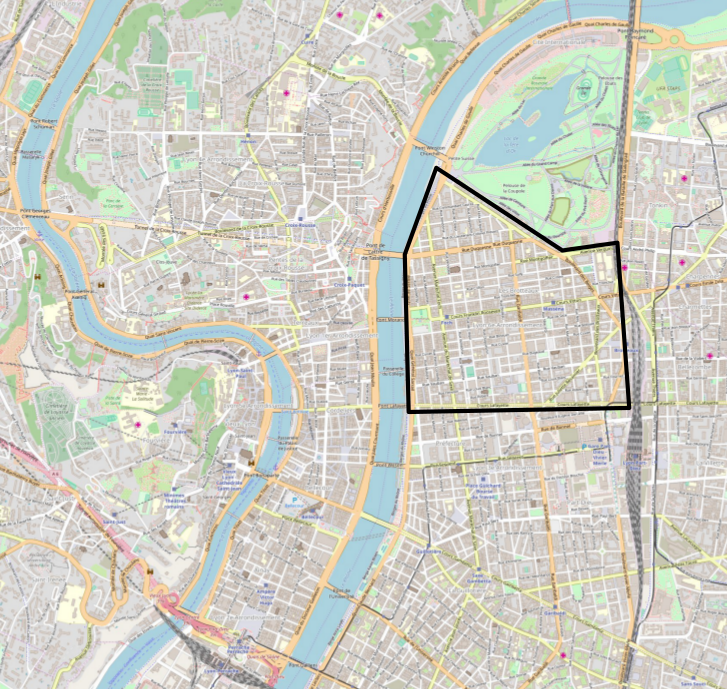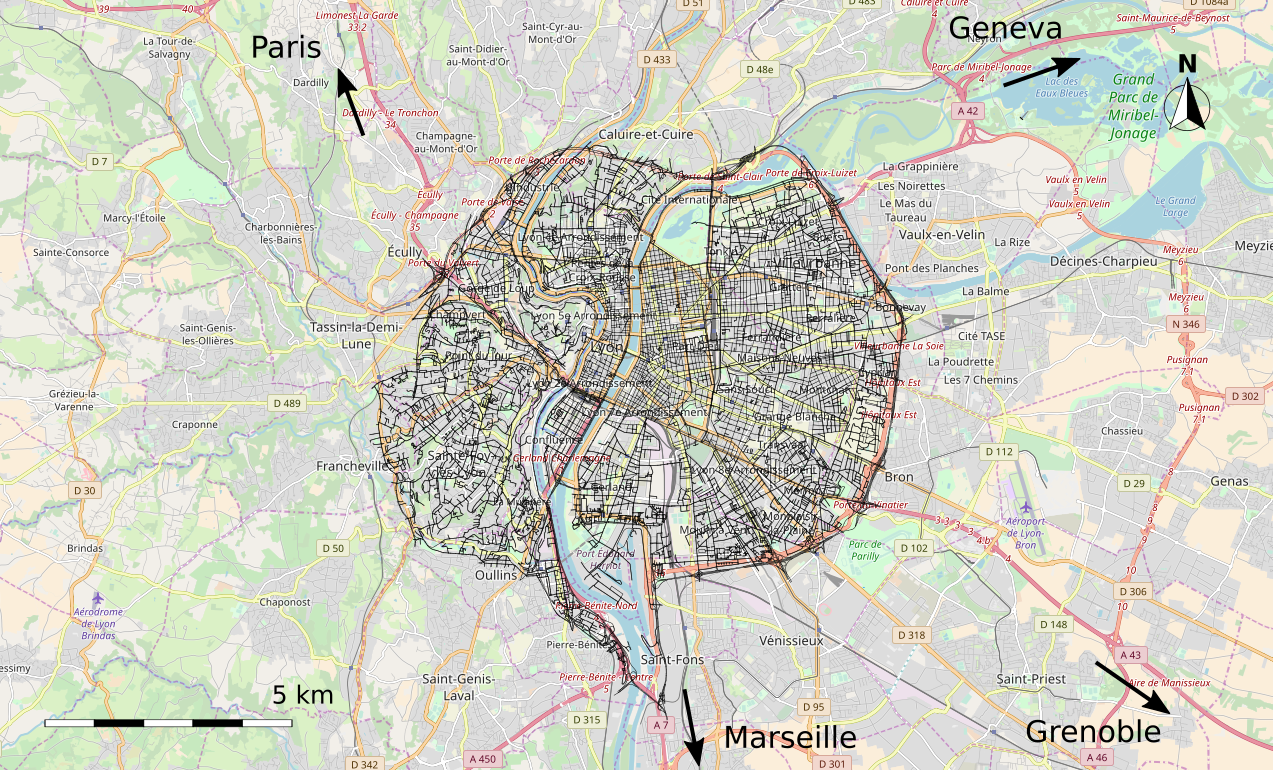

| , Leclercq, L., Gonzalez Ramirez, H., Krug, J. & Bécarie, C., 2021. Assessing traveler compliance with the social optimum: A stated preference study. Travel Behaviour and Society, 23:177–191, doi:10.1016/j.tbs.2020.12.005 > Download link (open access) |
| , Paipuri, M. & Leclercq, L., 2020. Dynamics of Flow Merging and Diverging in MFD-Based Systems: Validation vs. Microsimulation. Frontiers in Future Transportation, vol. 1, doi:10.3389/ffutr.2020.604088 > Download link (open access) |
| Ingole, D., & Leclercq, L., 2020. Minimizing network-wide emissions by optimal routing through inner-city gating. Transportation Research Part D: Transport and Environment, 86:102411, doi:10.1016/j.trd.2020.102411 > Download link (open access) |
| , Leclercq, L., Batista, S. F. A., Krug, J. & Paipuri, M., 2020. Calibration and validation of multi-reservoir MFD models: A case study in Lyon. Transportation Research Part B: Methodological, 136:62–86, doi:10.1016/j.trb.2020.03.006 > Download link (open access) |
| Ingole, D., & Leclercq, L., 2020. Perimeter gating control and citywide dynamic user equilibrium: A macroscopic modeling framework. Transportation Research Part C: Emerging Technologies, 111:22–49, doi:10.1016/j.trc.2019.11.016 > Download link (open access) |
| & Leclercq, L., 2019. Flow exchanges in multi-reservoir systems with spillbacks. Transportation Research Part B: Methodological, 122:327–349, doi:10.1016/j.trb.2019.02.014 > Download link (open access) |
| Ingole, D., & Leclercq, L., 2019. Nonlinear Model Predictive Control to reduce network-wide traffic emission. IFAC-PapersOnLine, 52(6):19–24, doi:10.1016/j.ifacol.2019.08.142 > Download link (open access) |
| & Leclercq, L., 2019. Heterogeneous perimeter flow distributions and MFD-based traffic simulation. Transportmetrica B: Transport Dynamics, 7(1):1378–1401, doi:10.1080/21680566.2019.1627954 > Download (.pdf) |
| , Leclercq, L. & Laval, J. A., 2017. Macroscopic urban models: Analytical and numerical investigations of existing models. Transportation Research Part B: Methodological, 101:245–267, doi:10.1016/j.trb.2017.04.002 > Download (.pdf)> Graphical abstract (.pdf) |
| Leclercq, L., Sénécat, A. & , 2017. Dynamic macroscopic simulation of on-street parking search: a trip-based approach. Transportation Research Part B: Methodological, 101:268–282, doi:10.1016/j.trb.2017.04.004 > Download (.pdf) |
| 04–06.09.2019 O | Ingole, D.P, & Leclercq, L., Optimal route guidance and Model Predictive Control of network-wide traffic emissionhEART 8th Symposium 2019, Budapest, Hungary |
| 17–21.06.2019 O | , Paipuri, M. & Leclercq, L.O, Multi-reservoir MFD-based simulation: An application to the city network of LyonTRISTAN X Symposium 2019, Hamilton Island, Australia |
| 13–17.01.2019 O | P, Paipuri, M. & Leclercq, L., Flow exchanges in multi-trip MFD-based systems: A validation study versus microscopic simulationTRB 98th Annual Meeting 2019, Washington DC, USA |
| O | Ingole, D.P, & Leclercq, L., Perimeter Control With External User Equilibrium DisciplineTRB 98th Annual Meeting 2019, Washington DC, USA |
| 04–07.09.2018 O | O, Paipuri, M. & Leclercq, L., Modeling local flow restriction at boundaries in multi-reservoir systems: An hybrid approachhEART 7th Symposium 2018, Athens, Greece |
| 07–11.01.2018 O | O & Leclercq, L., MFD-based simulation: Spillbacks in multi-reservoir networksTRB 97th Annual Meeting 2018, Washington DC, USA |
| 11–14.09.2017 O | O & Leclercq, L., The MFD trip-based approach applied to multi-reservoir systemshEART 6th Symposium 2017, Haifa, Israel |
| 08–12.01.2017 O | O, Leclercq, L. & Laval, J. A., Dual expression of macroscopic urban models: Analytical and numerical investigationsTRB 96th Annual Meeting 2017, Washington DC, USA |
| O | Sénécat, A., Leclercq, L.P & , Macroscopic simulation of on-street parking search: a trip-based approachTRB 96th Annual Meeting 2017, Washington DC, USA |
| 13–16.09.2016 O | P & Leclercq, L., Impact of the local demand-supply perimeter distribution and the internal reservoir trip length on MFD-based traffic simulationhEART 5th Symposium 2016, Delft, the Netherlands |
| 02–03.07.2016 O | & Leclercq, L.O, Impact of the local demand-supply perimeter distribution and the internal reservoir trip length on MFD-based traffic simulationTFT Summer Meeting 2016, Sydney, Australia |
(Superscript O for oral presentation, P for poster presentation)
Situation 1: free-flow conditions for the whole urban area
Situation 2: congested conditions due to a restriction on the outflow
Situation 1: free-flow conditions for the whole urban area
Situation 2: congested conditions due to a restriction on the outflow
Lyon 6 network split into 8 zones:


Simulation results: evolution of the mean speed and the number of vehicles in each zone.

Lyon network split into 5 zones:
Lyon network split into 10 zones: